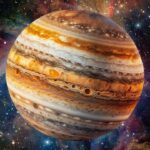The James Webb Space Telescope has unveiled the most detailed and breathtaking image of the universe, named ‘Webb’s First Deep Field’. This image, described by NASA as the deepest and most detailed ever captured, showcases our universe a few hundred million years after the Big Bang, depicting the formation of galaxies and the twinkling of the first stars. The light in this image traveled approximately 13.5 billion years to reach the James Webb Space Telescope, passing through the gravitational pull of the galaxy cluster SMACS 0723. The tiny speck of the universe captured in the image represents a monumental step in unraveling the mysteries of our cosmos.
Building upon the achievements of the Hubble Space Telescope, the James Webb Space Telescope boasts a primary mirror diameter of 21.6 feet, enabling it to detect objects that are 100 times fainter than what Hubble could observe. This advanced telescope’s capability to scan the universe in infrared light has allowed scientists to witness galaxies that emerged just 200 million years post the Big Bang. Delivered beyond the moon’s orbit in a gravitationally stable location, the JWST underwent meticulous calibration of its instruments and mirrors before taking the groundbreaking ‘Webb’s First Deep Field’ image. Despite a brief setback from a micrometeoroid strike in May, the spacecraft remained unharmed, showcasing its resilience and potential.
Upcoming images from the JWST will include stunning views of a stellar nursery, the atmosphere of a distant exoplanet, a figure-eight-shaped gas explosion from a dying star, and a quintet of galaxies engaged in a celestial dance of near-collisions. These forthcoming revelations promise to offer deeper insights into distant realms and prodigious understanding of our own planet. The JWST’s remarkable precision will enable scientists to address questions yet unasked, paving the way for transformative discoveries and furthering our comprehension of the universe. Stay tuned for more extraordinary revelations from the James Webb Space Telescope.







